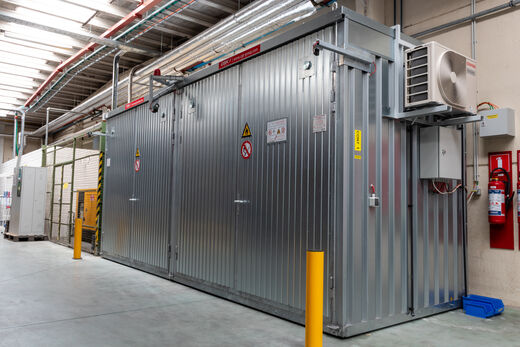Lithium battery legislation
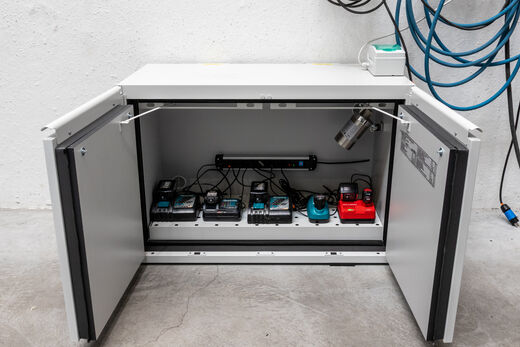
Lithium-ion batteries are powerful and ubiquitous, from smartphones to electric vehicles. But this technology also carries serious risks. Fires caused by improper charging or storage of lithium-ion batteries are on the increase every year. Causes range from mechanical damage and overcharging to manufacturing defects and exposure to high temperatures. Because of the enormous amount of energy stored in the cells, these batteries present a particular fire hazard.
To minimize this risk, it is essential to store and charge lithium-ion batteries safely. It 's best to store them in fireproof cabinets or containers specially designed to limit damage and ensure the safety of people and the environment in the event of an incident.
See our complete range of lithium cabinets and containers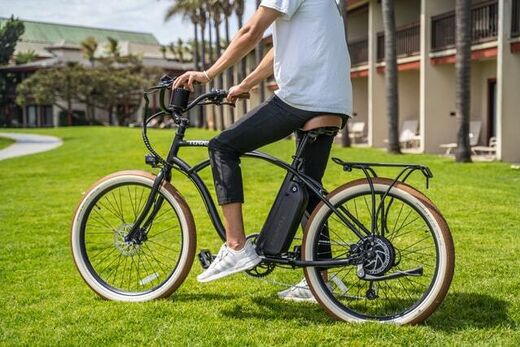
Where can I find lithium batteries?
- Bike parking for electric bikes or bike rental companies
- Electric cars
- Drones
- Hand tools such as drills and screwdrivers
- Laptops, cell phones, power supplies, scooters, headphones, toothbrushes...
- Energy storage from solar panels
- Green services using battery-powered machines instead of fossil fuels
- The average household has 125 batteries, increasingly lithium-ion batteries.
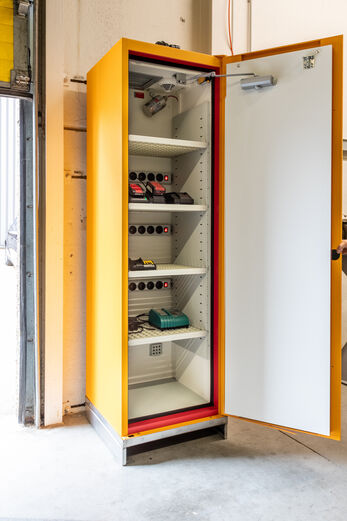
Thermal runaway, one of the greatest dangers of lithium batteries
One of the greatest dangers is thermalrunaway: a process in which a battery heats up uncontrollably due to overheating, mechanical damage or internal short-circuiting. In a matter of seconds, this can lead to fire, explosion or the emission oftoxic gases such as hydrogen fluoride.
As a li-ion battery causes a "metal fire", the fire cannot be extinguished by conventional means. The CGK Group has a comprehensive range of fire safety cabinets and safes that offer maximum safety when storing and charging these types of batteries. The unique, certified extinguishing system used activates automatically and very quickly, respects people and the environment and minimizes consequential damage.
Burning lithium batteriesin electric cars can only be extinguished using a container in which the burning vehicle is immersed in water for 48 to 72 hours. In an underground or covered parking lot, however, it is very difficult, if not impossible, for the fire department to reach the burning vehicle in this way, due to the limited height and width of the parking lots. Our mobile fire barriers are the solution.
Legislation on lithium battery storage Belgium
Charging and storing lithium batteries safely requires more than common sense. You need to comply strictly with current legislation, or anticipate where such legislation does not yet exist. In Belgium, there are currently no specific regulations concerning the storage of lithium batteries, but the growing number of serious incidents makes it crucial to invest now in safe storage. CGK's charging cabinets are designed to meet the most stringent standards. This means we can offer maximum safety and peace of mind, whatever the current or future legislation.
Our safety cabinets are fully certified to European standard EN 14470-1:2023, the reference standard for fireproof safety cabinets in laboratory and industrial environments. They are also tested to EN 1363-1, which confirms their fire resistance under realistic test conditions.
But that's not all. Our cabinets also comply with VDMA 24994, a recent and rigorous test method developed specifically for lithium battery storage. Indeed, many existing systems no longer seem to meet the necessary safety requirements. This is why it was developed by the Deutsches Institut für Normung (DIN), with the aim of better controlling risks such as fire and explosion. This certificate is also important for insurance companies: in the event of fire damage, compensation may depend on the use of a certified cabinet.
Our cabinets are not only structurally durable and mechanically safe in accordance with EN 16121, but also contain advanced safety features and non-combustible materials in accordance with EN 13501-1.
At CGK, we keep a close eye on regulatory developments. So you can be sure of a future-proof solution.
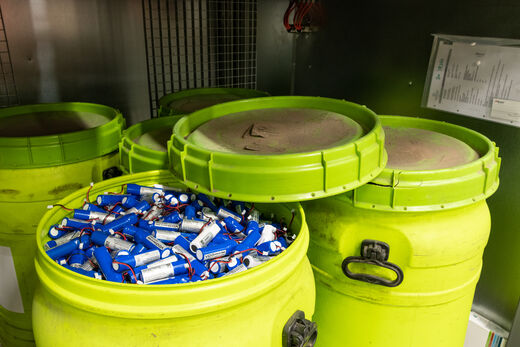
Storing broken or defective lithium batteries
Store broken or defective lithium batteries in a sealed steel can, or take them promptly to collection points.
For example, a box with a hinged lid.
- Box with hinged lid.
- There are granules between the inner and outer plates, limiting the temperature of the outer plate.
- The lid is not 100% watertight, so excessive pressure can escape.
- It's best to keep it within 10 m of buildings.
- Thanks to the cabinet, we avoid flying particles from burning lions.
- Dangerous fumes are released, however.
Would you like to find out more about our lithium battery storage solutions?
Leave your contact details or request a no-obligation quote.

